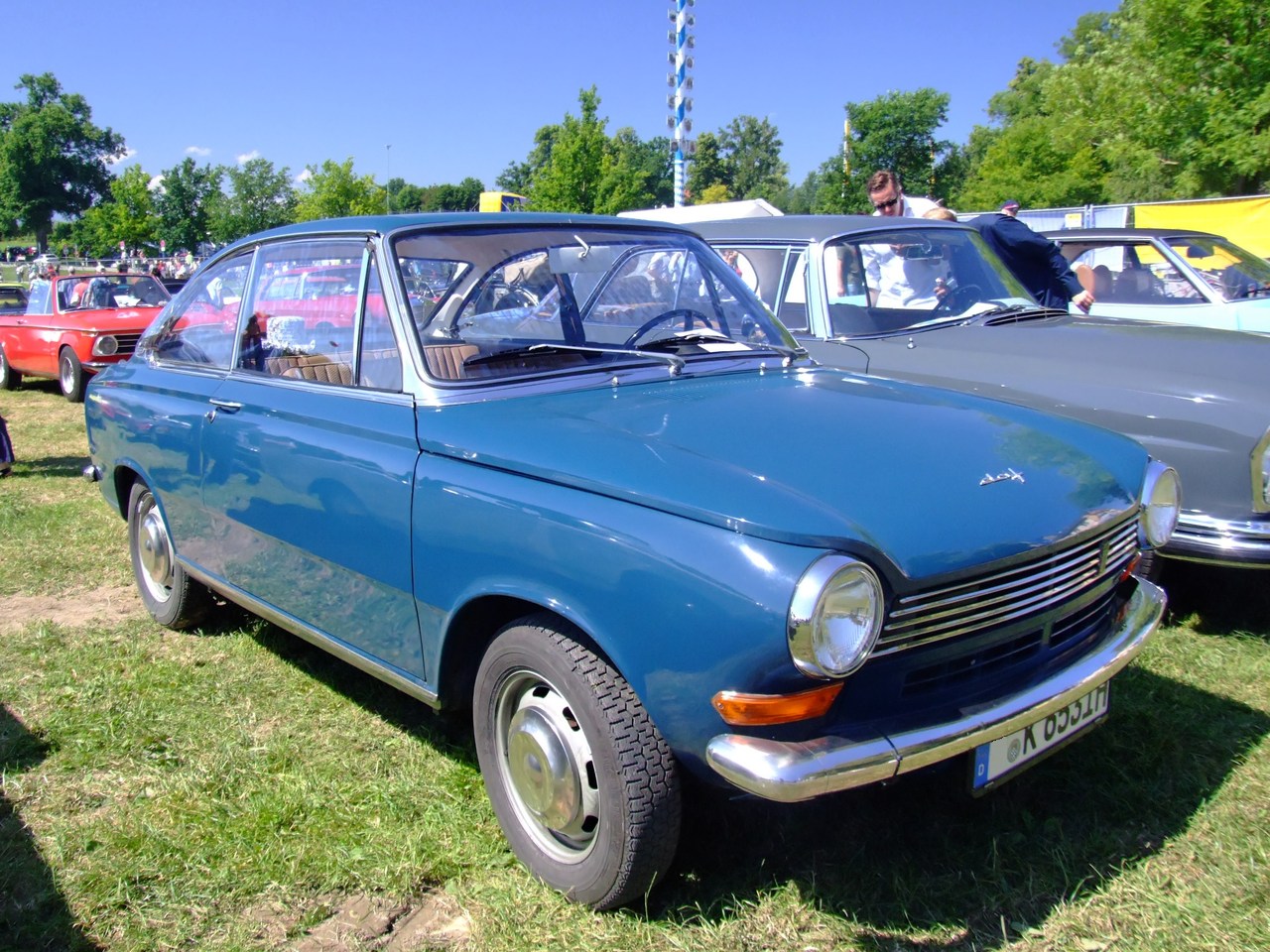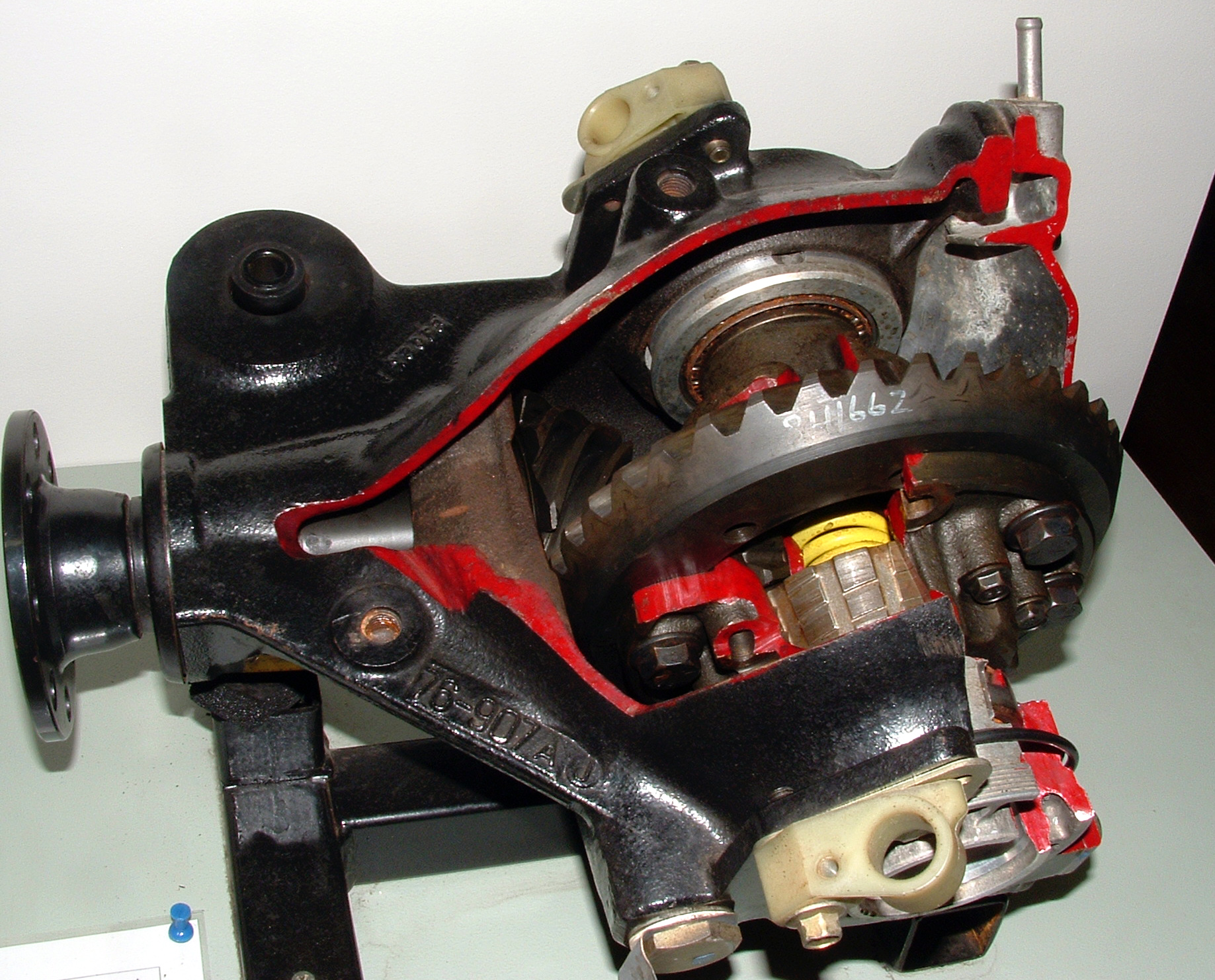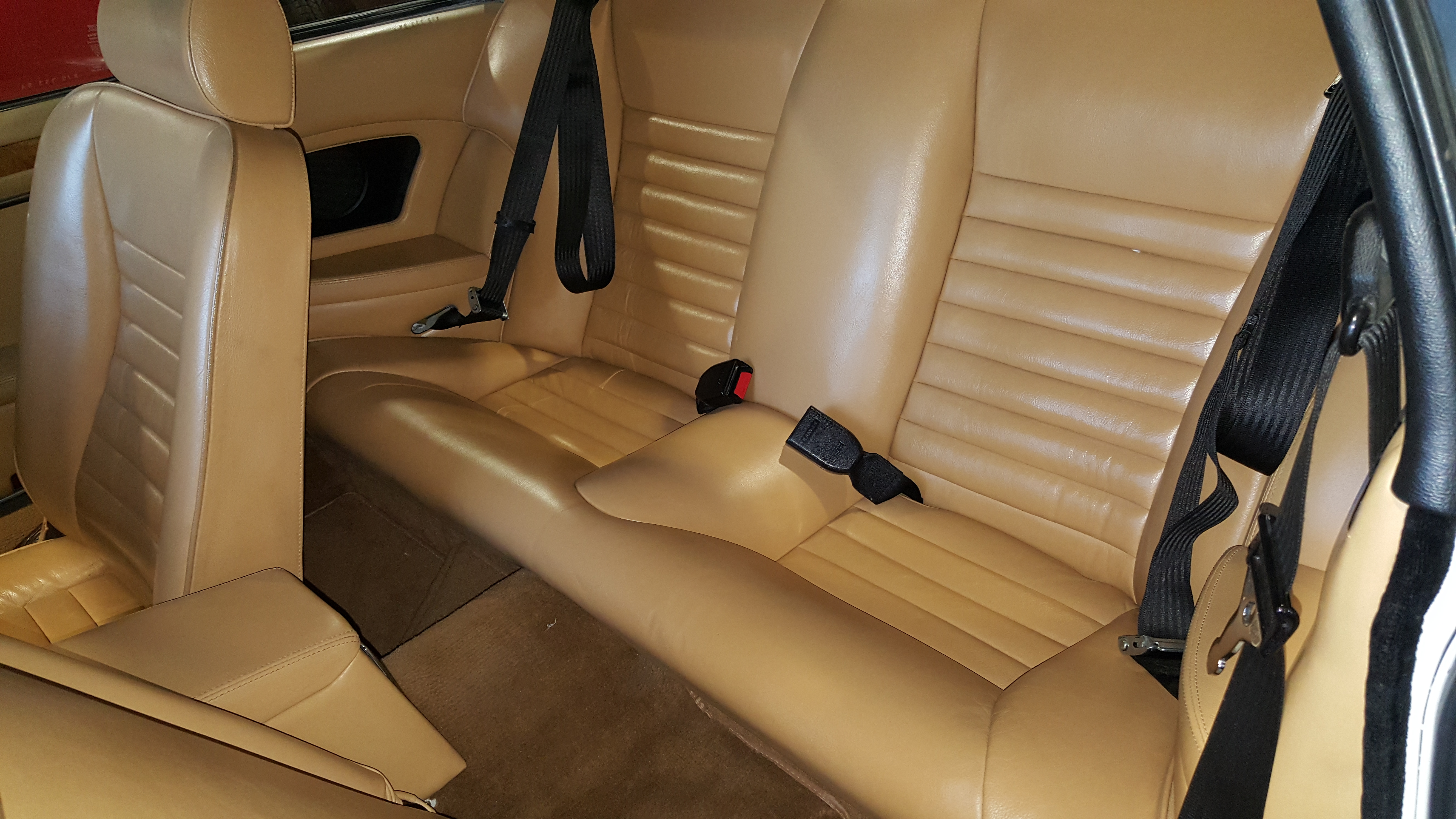|
DAF 55
The DAF 55 is a small family car produced by the The Netherlands, Dutch company DAF Trucks, DAF from December 1967 to September 1972. At that time it was replaced with the DAF 66. All 55s featured the unique Variomatic belt-driven continuously variable transmission, with no manual transmission available. This feature of all DAF cars was very unusual for its class at the time. The 55 was available as a 2-door saloon, a 3-door estate and a 2-door coupe. In total 164,231 DAF 55s were built. Origins The 55 was developed to be a more powerful version of the 1966 DAF 44. The redesign was extensive, and featured the following major changes: *Powertrain **Because the 44's two-cylinder DAF-designed boxer engine was at the end of its development, DAF partnered with Renault to build a version of their 1108 cc water-cooled inline 4 Renault Cléon engine, C-series engine, dubbed the B110. *Suspension **The front suspension was changed from the 44's transverse leaf spring setup to lon ... [...More Info...] [...Related Items...] OR: [Wikipedia] [Google] [Baidu] |
DAF Trucks
DAF Trucks is a Dutch truck manufacturing company and a division of Paccar. Its headquarters and main plant are in Eindhoven. Cabs and axle assemblies are produced at its Westerlo plant in Belgium. Some of the truck models sold with the DAF brand are designed and built by Leyland Trucks at its Leyland plant in England. History In 1928, Hubert "Hub" van Doorne founded the company as ''Commanditaire Vennootschap Hub van Doorne's Machinefabriek''. His co-founder and investor was A. H. Huenges, managing director of a brewery. Van Doorne had repaired Huenges' car several times, and Huenges, pleased with his work, offered to finance him in business. Hub started to work in a small workshop on the grounds of the brewery. In 1932, the company, by then run by Hub and his brother, Wim van Doorne, changed its name to ''Van Doorne's Aanhangwagen Fabriek'' (Van Doorne's Trailer Factory), abbreviated to ''DAF''. Huenges left the company in 1936 and the DAF company was then complet ... [...More Info...] [...Related Items...] OR: [Wikipedia] [Google] [Baidu] |
DAF 44
The DAF 44 is a small family car that was introduced in September 1966 by the Dutch company DAF. It was the first car to be built at the company's new plant at Born in Limburg. Styled by Michelotti, it represented a cautious move upmarket for the company which hitherto had produced, for the passenger car market, only the smaller, slower Daffodil model (subsequently rebadged as the DAF 33 to align with the form of nomenclature introduced with the 44). The 2 cylinder engine would have been familiar to any driver of the less powerful DAF 33, and the bore remained unchanged at 85.5 mm. Stroke was increased to 73.5 mm, however, giving an increase in engine displacement from 746 cc to 844 cc and an increase in claimed output from 28 bhp to 34 bhp. The compression ratio remained low enough to permit the use of relatively low octane fuel. Stopping power commensurate with the car's rather leisurely performance came from all-round drum brakes. An innovative fe ... [...More Info...] [...Related Items...] OR: [Wikipedia] [Google] [Baidu] |
Ford BDA
Cosworth is a British automotive engineering company founded in London in 1958, specialising in high-performance internal combustion engines, powertrain, and electronics for automobile racing (motorsport) and mainstream automotive industries. Cosworth is based in Northampton, England, with American facilities in Indianapolis and Mooresville, North Carolina. Cosworth has collected 176 wins in Formula One (F1) as engine supplier, ranking third with most wins, behind Ferrari and Mercedes. Corporate history The company was founded as a British racing internal combustion engine maker in 1958 by Mike Costin and Keith Duckworth. Its company name, "Cosworth", was derived as a portmanteau of the surnames of its two founders (Costin and Duckworth). Both of the co-founders were former employees of Lotus Engineering Ltd., and Cosworth initially maintained a strong relationship with Colin Chapman; and initial revenues of the company came almost exclusively from Lotus. When the compa ... [...More Info...] [...Related Items...] OR: [Wikipedia] [Google] [Baidu] |
Limited Slip Differential
A limited-slip differential (LSD) is a type of differential that allows its two output shafts to rotate at different speeds but limits the maximum difference between the two shafts. Limited-slip differentials are often known by the generic trademark Positraction, a brand name owned by General Motors. In an automobile, such limited-slip differentials are sometimes used in place of a standard differential, where they convey certain dynamic advantages, at the expense of greater complexity. Early history In 1932, Ferdinand Porsche designed a Grand Prix racing car for the Auto Union company. The high power of the design caused one of the rear wheels to experience excessive wheel spin at any speed up to . In 1935, Porsche commissioned the engineering firm ZF to design a limited-slip differential to improve performance. The ZF "sliding pins and cams" became available, and one example was the Type B-70 used during the Second World War in the military VWs ( Kübelwagen and Schwimmwa ... [...More Info...] [...Related Items...] OR: [Wikipedia] [Google] [Baidu] |
Brake Booster
A vacuum servo is a component used on motor vehicles in their braking system, to provide assistance to the driver by decreasing the braking effort. In the US it is commonly called a brake booster. A vacuum servo also known as a power booster or power brake unit uses a vacuum to multiply the drivers pedal effort and apply that effort to the master cylinder In automotive engineering, the master cylinder is a control device that converts force (commonly from a driver's foot) into hydraulic pressure. This device controls slave cylinders located at the other end of the hydraulic brake system. A .... It can not be used when the engine is off, mostly after a few attempts. Notes External links What is a brake booster? (a 4-page basic tutorial article, with illustrations & animation) at HowStuffWorks.com [...More Info...] [...Related Items...] OR: [Wikipedia] [Google] [Baidu] |
2+2 (car Body Style)
The 2+2 is a version of the coupé car-body style that has two front seats for the driver and front passenger, as well as two small (narrow legroom) rear seats for children or other occasional usage. It is therefore different from 4 or 5 seat versions that have normal size rear seats. Some manufacturers which sell coupés without rear seats often market the car as "2+2" or as 2-plus-2. Definition By standard definition, all cars in the 2+2 category have two front seats and two rear seats. Other common characteristics for 2+2 cars include relatively little room for the rear passengers and a coupé body with two doors. Although many convertible, targa top and hatchback cars meet the literal definition of a 2+2, they are rarely considered 2+2s. Usage There are many coupé which meet the definition of a 2+2, but have not been described by the manufacturer as such. This is because the term 2+2 is most often used to distinguish cars from a 2-seat open version of the same model. P ... [...More Info...] [...Related Items...] OR: [Wikipedia] [Google] [Baidu] |
Swing Axle
A swing axle is a simple type of independent (rear wheel) suspension designed and patented by Edmund Rumpler in 1903. This was a revolutionary invention in automotive suspension, allowing driven (powered) wheels to follow uneven road surfaces independently, thus enabling the vehicle's wheels to maintain better road contact and holding; plus each wheel's reduced unsprung weight means their movements have less impact on the vehicle as a whole. The first automotive application was the Rumpler Tropfenwagen, later followed by the Mercedes 130H/150H/170H, the Standard Superior, the Volkswagen Beetle and its derivatives, the Chevrolet Corvair, and the roll-over prone M151 jeep amongst others. Some later automobile rear swing axles have universal joints connecting the driveshafts to the differential, which is attached to the chassis. Swing axles do not have universal joints at the wheels — the wheels are always perpendicular to the driveshafts; the design is therefore not suitable ... [...More Info...] [...Related Items...] OR: [Wikipedia] [Google] [Baidu] |
Torsion Bar Suspension
A torsion bar suspension, also known as a torsion spring suspension, is any vehicle suspension that uses a torsion bar as its main weight-bearing spring. One end of a long metal bar is attached firmly to the vehicle chassis; the opposite end terminates in a lever, the torsion key, mounted perpendicular to the bar, that is attached to a suspension arm, a spindle, or the axle. Vertical motion of the wheel causes the bar to twist around its axis and is resisted by the bar's torsion resistance. The effective spring rate of the bar is determined by its length, cross section, shape, material, and manufacturing process. Usage Torsion bar suspensions are used on combat vehicles and tanks like the T-72, Leopard 1, Leopard 2, M26 Pershing, M18 Hellcat, M48 Patton, M60 Patton and the M1 Abrams (many tanks from World War II used this suspension), and on modern trucks and SUVs from Ford, Chrysler, GM, Mitsubishi, Mazda, Nissan, Isuzu, LuAZ, and Toyota. Class 8 truck manufacturer Kenworth als ... [...More Info...] [...Related Items...] OR: [Wikipedia] [Google] [Baidu] |
Leaf Spring
A leaf spring is a simple form of spring commonly used for the suspension in wheeled vehicles. Originally called a ''laminated'' or ''carriage spring'', and sometimes referred to as a semi-elliptical spring, elliptical spring, or cart spring, it is one of the oldest forms of vehicle suspension. A leaf spring is one or more narrow, arc-shaped, thin plates which are attached to the axle and chassis in a way that allows the leaf spring to flex vertically in response to irregularities in the road surface. Lateral leaf springs are the most commonly used arrangement, running the length of the vehicle and mounted perpendicular to the wheel axle, but numerous examples of transverse leaf springs exist as well. Leaf springs can serve multiple suspension functions: location, springing, and to some extent damping as well, through interleaf friction. However, this friction is not well controlled, resulting in stiction and irregular suspension motions. For this reason, some manufacturers have ... [...More Info...] [...Related Items...] OR: [Wikipedia] [Google] [Baidu] |
Autocar (magazine)
''Autocar'' (originally ''The Autocar'') is a weekly British automobile magazine published by the Haymarket Media Group. It was first published in 1895 and refers to itself as "the world's oldest car magazine". There are now several international editions, including for China, India, New Zealand, and South Africa. History The publication was launched as ''The Autocar'' by Iliffe and Son Ltd. "in the interests of the mechanically propelled road carriage" on 2 November 1895 when, it is believed, there were only six or seven cars in the United Kingdom. L. J. K. Setright suggests that the magazine was set up by Henry Sturmey as an organ of propaganda for Harry J. Lawson, founder of the Daimler Company and a journalist on the magazine in its early days. Henry Sturmey stood down as editor of ''The Autocar'' magazine and left the company in 1901. ''Autocar'' claims to have invented the road test in 1928 when it analysed the Austin 7 Gordon England Sunshine Saloon. ''Aut ... [...More Info...] [...Related Items...] OR: [Wikipedia] [Google] [Baidu] |
Renault Cléon Engine
Groupe Renault ( , , , also known as the Renault Group in English; legally Renault S.A.) is a French Multinational corporation, multinational Automotive industry, automobile manufacturer established in 1899. The company produces a range of cars and vans, and in the past has manufactured trucks, tractors, tanks, buses/coaches, aircraft and aircraft engines, and autorail vehicles. According to the Organisation Internationale des Constructeurs d'Automobiles, in 2016 Renault was the Automotive industry, ninth biggest automaker in the world by production volume. By 2017, the Renault–Nissan–Mitsubishi Alliance had become the world's biggest seller of light vehicles. Headquartered in Boulogne-Billancourt, near Paris, the Renault group is made up of the namesake Renault marque and subsidiaries, Alpine (automobile), Alpine, Renault Sport (Gordini), Automobile Dacia from Romania, and Renault Samsung Motors from South Korea. Renault has a 43.4% stake with several votes in Nissan o ... [...More Info...] [...Related Items...] OR: [Wikipedia] [Google] [Baidu] |






.jpg)

